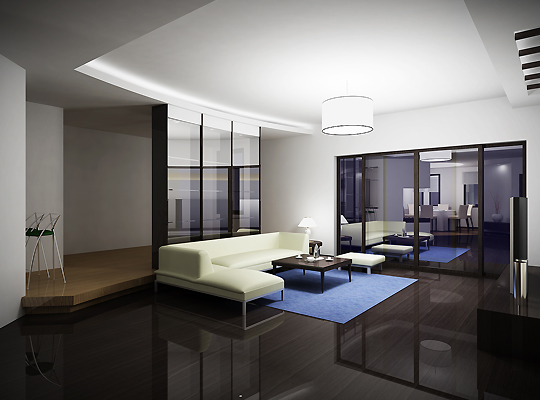402.932.7243
OmahaOfficeFurniture.com © 2021 All Rights Reserved.
Privacy Policy: We do not share or sell private information to others. Please see Google for their privacy statements. Sitemap.
OmahaOfficeFurniture.com connects office furniture sellers with Omaha office furniture buyers to enhance their professional appearance, organization and productivity.
OmahaOfficeFurniture.com 402.932.7243 info@omahaofficefurniture.com
OmahaOfficeFurniture.com-Furniture Style Guide
When shopping for Omaha office furniture, you may think mostly about the type or types of office furniture you need. But you should also give some thought to the style of office furniture you plan to buy. While type of furniture refers to the way you will use the piece of furniture (function), style refers to its physical appearance (form). Although function is more important than form, form is what attracts the eye and lets you make a statement to others about yourself, your employees, and your business.
The Omaha office furniture market features sellers who deal in different office furniture styles. A partial list of available office furniture styles is given below. The style names come from periods of history or from the names of furniture craftsmen who developed or adapted the style.
Art Deco: The Art Deco style developed around the end of World War I and was most popular from 1925 to 1945. Art Deco symbolized the rise of technology through the use of geometric shapes (polygons, spheres, circles) arranged symmetrically. It also made use of bold colors (and the stark contrast of black and white) and lavish ornamentation. A variation was the Streamline Moderne style of the 1930s, which streamlined the appearance of objects, whether they were designed to move or not. Art Deco furniture might be made with aluminum, stainless steel, chrome, plastic, or lacquered wood.
Art Nouveau: A style originally developed between the years 1890 to 1914, Art Nouveau takes its name from Sigmund Bing’s Maison de l’Art Nouveau gallery. Art Nouveau was inspired by natural forms and structures and makes considerable use of prominent curves and arches in its ornate designs. Original Art Nouveau pieces, made of wood, were expensive, as they could not readily be mass-produced, and also required care to maintain their glossy finish.
Contemporary: “Contemporary” refers to the style of furniture developed around 1980 and continuing to the present day. Contemporary furniture can employ the look of wood or metal, either separately or in combination, and may mix natural wood colors with white, black, or other colors to suggest a look of today or of the future as envisioned today.
European Renaissance: Named for the cultural birth of the 14th and 15th centuries. Furniture from the actual Renaissance period was often ornately carved and frequently gilded. Modern European Renaissance furniture, however, features inlays and column-like corner carvings, and drawer pulls with a wrought-metal look that are more readily accomplished through mass production. The overall look is one that suggests history and wealth.
French Provincial: French Provincial furniture takes its name from the regions of France or French influence where the style developed. French Provincial tables and chairs are noted for having legs that curve outward at the top and inward at the bottom (cabriole legs) and simple scalloping. Chairs often featured ladder backs. French Provincial can be finished a number of ways, but most often features an aged look.
Mid-Century Modern: Mid-century modern furniture encompasses the years from 1933 to 1965. Its influences include architect Frank Lloyd Wright and his concept of “organic architecture” and Walter Gropius of the Bauhaus school. Chairs featured curved surfaces and cutouts: the plastic “tulip chair” of Eero Saarinen and the “egg chair” of Arne Jacobsen are both designs developed during this time. The mesh-back office chair with padded seat is considered to be derived from the designs of Charles and Bernice “Ray” Eames.
Queen Anne: Named after and originally developed during the style of the British monarch who reigned from 1702 to 1714, although the style was in vogue historically until 1760. Queen Anne furniture is noted for its cabriole legs (curve outward at the top, inward at the bottom) with pad feet, C- and S-shaped curves, and plush seat cushions. (Leather or vinyl seat cushions typically feature gathers and decorative buttons.) Woods used in the original furniture included cherry, maple, poplar, and walnut; modern furniture in this style will mimic the appearance of these woods. Some Queen Anne furniture features a black lacquer finish known as japanning.
Rustic: Rustic furniture is primarily made of woods like pine or oak, although some parts can be made of metal. The wood or veneer is finished in a fashion that suggests either freshly-hewn or distressed wood to create either a vintage or backwoods feel.
Scandinavian: An offshoot of mid-century modern furniture that features low-cost materials such as pressed wood, pressed steel, plastic, and anodized or enameled aluminum. It plays to the belief of modernism that good-looking, functional items should be affordable by everyone, not just the wealthy. Scandinavian design pieces have a simple, functional look.
Traditional: Traditional is something of a “catchall” term to describe furniture with a style that is neither modern nor contemporary. Traditional-style furniture may include elements of the Art Deco, Art Nouveau, European Renaissance, French Provincial, or Queen Anne styles. It typically features the look of wood and leather, whether those materials are used or laminates, veneers, and vinyl instead.
When choosing for your Omaha office, furniture should be selected according to both your budget and the image and values you want to represent to your employees and your visitors. Creative businesses may want to choose a furniture style that suggests youth and energy, such as Mid-Century Modern or Contemporary, while more conservative businesses may want to choose a style that suggests tradition, such as French Provincial, Queen Anne, or Traditional.
For assistance, check with one of the sellers on OmahaOfficeFurniture.com or a design professional specializing in office design.
